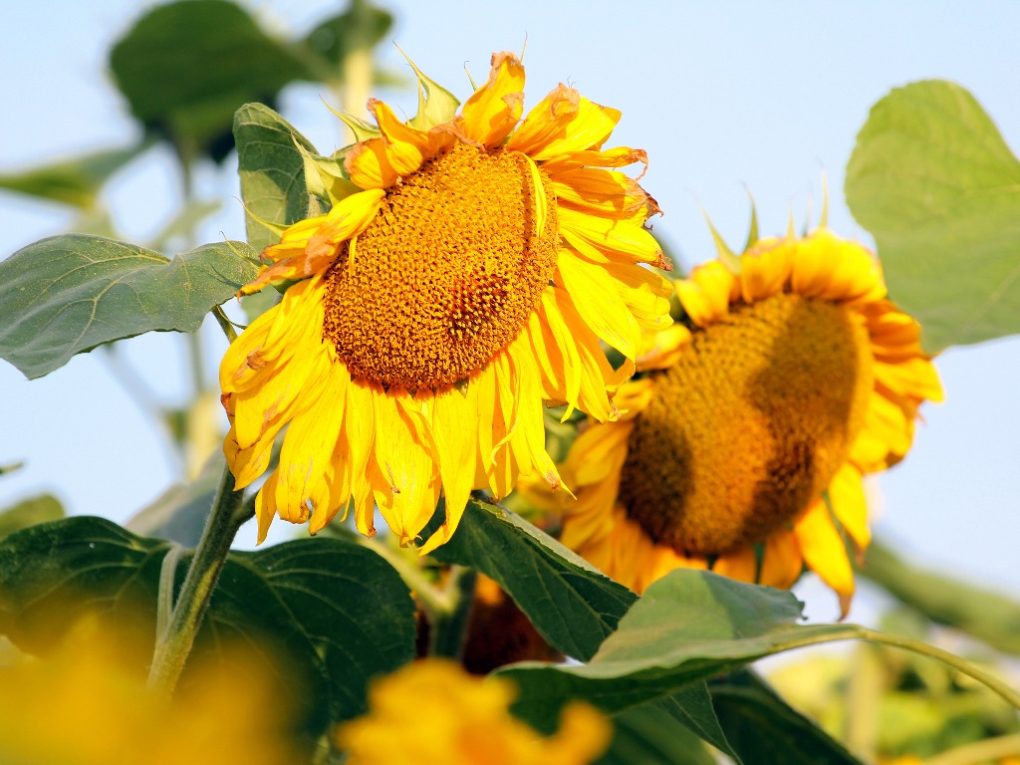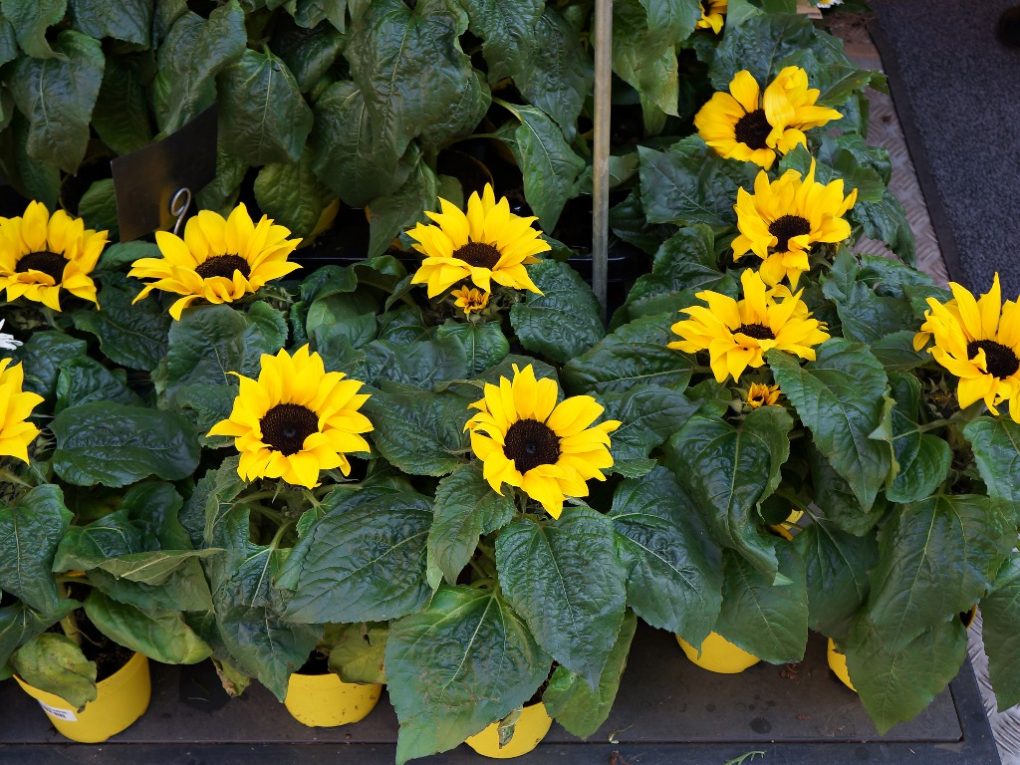Are Sunflowers Invasive: How Sunflowers Spread and Ways to Control Its Unwanted Growth
No, sunflowers are usually not considered invasive, although some species can be aggressive and spread easily under certain conditions. Also, many sunflowers are annual plants, meaning they complete their life cycle within one growing season and do not persist from year to year.
However, some sunflower species can reseed themselves if allowed to drop their seeds, potentially spreading the plant beyond its original location. As such, it is always a good idea to check with local authorities or conservation organizations to ensure the plant is appropriate for your area and will not threaten native ecosystems or crops.

Table of Contents
How Sunflowers Spread
One common method of sunflower spread is through seeds. Many sunflowers produce large, heavy flower heads that are filled with seeds. When the flowers dry out, and the seeds mature, they can fall to the ground or be dispersed by wind, animals, or humans. These seeds can then germinate and grow into new sunflower plants, potentially spreading the plant over a wider area.
Some sunflower species can be spread by humans, either intentionally or accidentally. For example, sunflowers may be included in seed mixes or sold as ornamental plants, and they could be planted in new locations where they could spread and grow.
How to Control the Unwanted Spread of Sunflowers
Controlling the spread of sunflowers will depend on the species and the growing conditions. Here are some general tips that may help.
Harvest the Flowers Before They Go to the Seed
Harvesting the flowers before they go to seed is an effective way to control the spread of sunflowers because it prevents the plants from producing new seeds that can germinate and grow into new plants.
Sunflowers are prolific seed producers, with each flower head containing hundreds or thousands of seeds. If left uncontrolled, the seeds can drop to the ground and germinate, producing new sunflower plants that can quickly take over an area. Harvesting the flowers before they go to seed removes the source of new seeds and prevents the plants from spreading further.

This is particularly important if you are growing sunflowers in a garden or landscape where you want to keep the plants contained. Harvesting the flowers before they go to seed also allows you to collect the seeds for use in other applications, such as cooking, bird feeding, or planting in a more controlled manner.
Remove Seed Heads After Flowering
Once the sunflowers have finished blooming, the seed heads will dry out and release the seeds. Removing the seed heads before they dry out and release the seeds prevents the plants from producing new seeds that can germinate and grow into new plants.
This method can be particularly useful if you missed the opportunity to harvest the flowers before they went to seed or if you want to prevent volunteers from sprouting up in nearby areas. However, it’s important to note that removing the seed heads after flowering will not prevent sunflowers from spreading through their root systems if they are a perennial species.
Mow or Cut Down Plants Before They Mature
Mowing or cutting down sunflower plants before they mature is another effective way to control their spread, particularly for perennial species. This method is particularly useful when dealing with large areas where sunflowers have spread out of control.
When you mow or cut down sunflowers before they mature, you prevent the plants from producing new seeds that can germinate and grow into new plants. Removing the above-ground growth limits the plant’s ability to store energy for future growth. This can help weaken the plant over time and reduce its ability to spread.
Mowing or cutting down sunflower plants may need to be repeated several times over a growing season to ensure that all the plants are effectively controlled. It’s important to mow or cut the plants as close to the ground as possible to limit the ability of the plant to regrow. Additionally, it’s important to properly dispose of the plant debris to prevent seeds from spreading to other areas.
Plant Them in Containers
Planting sunflowers in containers is an effective way to prevent their spread, particularly for annual species. Planting sunflowers in containers limits their ability to spread through their root systems and prevents seeds from dropping and germinating in unwanted areas.

When planting sunflowers in containers, choosing a large container is important to accommodate the plant’s root system and provide adequate drainage. Sunflowers require a lot of water, so it’s important to ensure that the soil in the container stays moist and doesn’t dry out.
It’s also important to fertilize container-grown sunflowers regularly to give them the nutrients they need to grow and bloom. Additionally, container-grown sunflowers may be more susceptible to pests and diseases, so monitoring them regularly and taking appropriate measures to control any issues is important.
By planting sunflowers in containers, you can enjoy their beauty and benefits without the risk of them spreading in unwanted areas. Additionally, container-grown sunflowers can be moved around to take advantage of the best growing conditions, such as areas with optimal sunlight or protection from strong winds.
Check With Local Authorities
Checking with local authorities is an important step in preventing sunflower spread, as they can provide information on whether certain sunflower species are considered invasive or harmful in your area. In many places, it is illegal to plant invasive species, and local authorities can guide which species are safe to plant and which should be avoided.
Additionally, local authorities may have regulations regarding the planting, cultivation, and disposal of sunflowers. For example, they may require permits for planting sunflowers in certain areas or specify rules for disposing of sunflower plant material after harvesting or removing the plants.
By checking with local authorities, you can ensure you follow all relevant regulations and prevent unwanted sunflowers from spreading in your area. It’s also a good idea to stay informed about any updates or changes to local regulations or policies related to sunflowers. This can help you stay up-to-date on best practices for avoiding potential legal issues.
